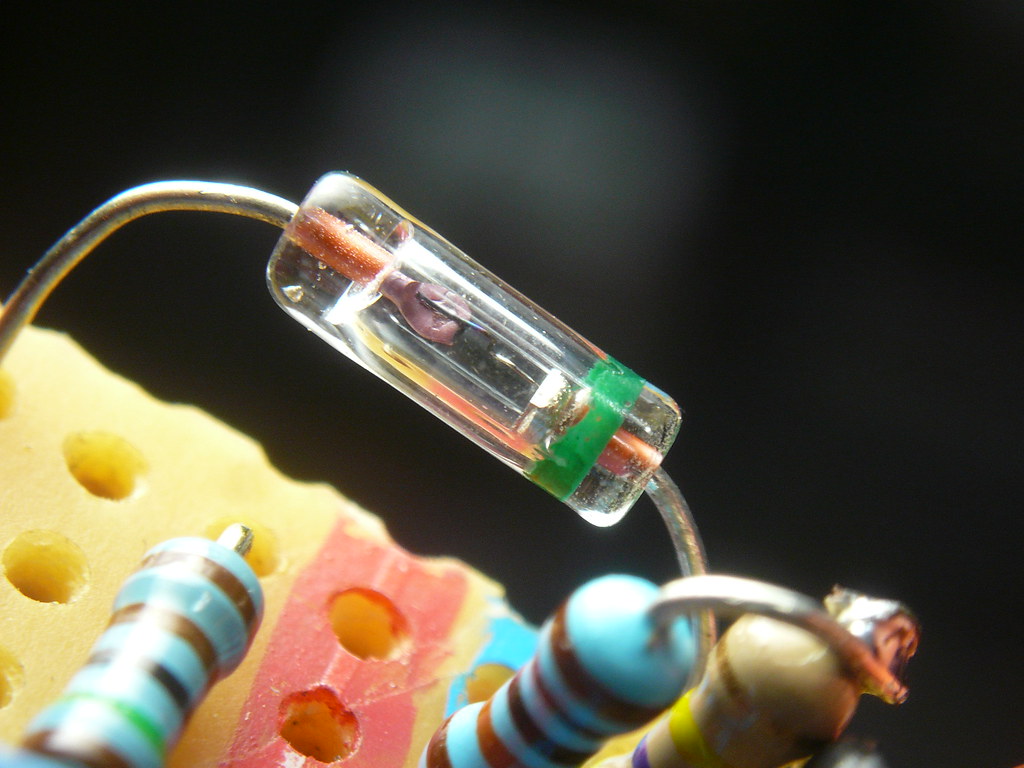G'day all, judging by the hi-res photos posted by the OP earlier I am almost sure that what were presumed to be 'germanium' diodes were actually zener diodes as they 'look' exactly the same!
Sorry to disagree, but I have never, ever seen a zener diode looking like that - and I've seen
many zener diodes. They are all considerably smaller than that (or have a plastic case for the power types), and do not allow to see the chip. The large (0.3" x 0.1" dia.) clear glass case with just one paint strip for the cathode is long obsolete, typical of germanium diodes. Besides it's really easy to tell for sure whether these diodes are germanium, silicon juction or schottky (the latter being very unlikely, especially in this application). Just use the diode voltage function of any $20 multimeter, the voltage will tell you which kind it is: around 0.15 V for a schottky, 0.3 V for germanium, 0.7 V for silicon. I can't believe that three diodes went bad simultaneously unless the power supply failed, so the test is assured to give the answer.
To the OP: it would help considerably to have a schematic if at all possible, Even hand-drawn from the PCB, that would be vastly better than nothing at all. Besides, it would be interesting to know why exactly you want to replace these diodes :scratch2: In other words, I concur with Felix's final sentence, although for different reasons.
And to reply the question of the first post: if you have to replace a germanium diode it is always a bad idea to replace it with a silicon or a schottky: the junction voltage does matter, and also the temperature coefficient in quite a few cases. Germanium calls for a germanium replacement. As for the type within the germanium family: as long as the voltage, current & power ratings are the same or higher, I don't think it can really make a difference. It might in some more sophisticated circuits using silicon diodes where capacitance matters, but that's extremely unlikely here. AA119 and 1N60 are practically the same, and often used for replacements.






